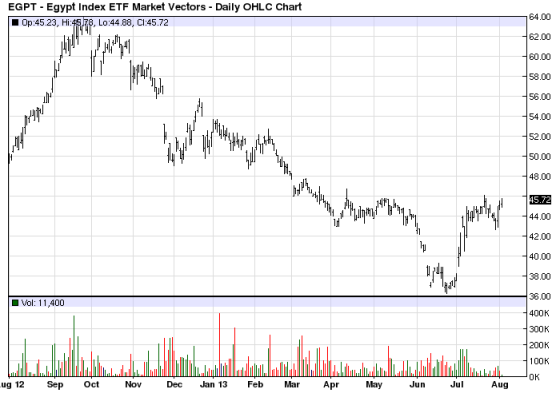Brief History Of ETFs
Post on: 3 Апрель, 2015 No Comment

by Michael Johnston on September 11, 2012 | Updated December 8, 2014
Exchange-traded products are ubiquitous in the world of investing. The more than 1,600 products have accumulated billions of dollars, and are widely used by all types of investors, from individuals with relatively small accounts and simple strategies to sophisticated hedge funds managing billions. So it may be hard to believe that the ETF industry is still relatively young; most ETFs have been around for only a handful of years, and it wasnt that long ago that assets were less than $500 billion. Below is a whirlwind history of the ETF industry, starting with the launch of the first exchange-traded product [try the free ETF screener ]:
January 1993: S&P 500 SPDR (SPY ) Debuts
When the first ETF began trading, Bill Clinton was in the Oval Office, gas cost about a dollar a gallon, and the Red Sox were still a decade away from ending their World Series drought. SPY launched with relatively little fanfare, but in the more than 20 years since has accumulated more than $100 billion in assets.
April 1995: Second ETF Debuts
Just the second man to walk on the moon (Buzz Aldrin) is not nearly as well known as Neil Armstrong, the second ETF launched doesnt stick in the mind of many investors. In the spring of 1995, State Street rolled out its MidCap SPDR (MDY ), which seeks to replicate the performance of the S&P MidCap 400 Index. MDY remains quite popular; this fund has about $15 billion in assets, and an average daily volume of about two million shares.
March 1996: iShares Debuts International ETFs
The first iShares ETFs to debut included a suite of international equity ETFs targeting Australia (EWA ), Canada (EWC ), Sweden (EWD ), Hong Kong (EWH ), Germany (EWG ), Italy (EWI ), Japan (EWJ ), Belgium (EWK ), Switzerland (EWL ), Malaysia (EWM ), the Netherlands (EWN ), Austria (EWO ), Spain (EWP ), France (EWQ ), Singapore (EWS ), the United Kingdom (EWU ), and Mexico (EWW ).
December 1998: Sector SPDRs Debut
Today there are ETFs that deliver access to extremely narrow sub-sectors of the U.S. economy, including smartphones, platinum miners, and social media (SOCL). The first step on the road to this level of sector granularity was taken in late 1998, when a lineup of products targeting the major sectors of the U.S. economy debuted. The Sector SPDRs are pretty straightforward; they split up the S&P 500 by sector.
July 2002: Bond ETFs Debut
Bond ETFs have become tremendously popular in the late 2000s and the early 2010s, so it may be hard to believe that these products were born only a decade ago. iShares launched its first four bond ETFs IEF. LQD, SHY. and TLT in the summer of 2002.
LQD remains the second largest bond ETF to this day, with about $18 billion in assets. BND, which launched in April 2007, comes in first with about $20 billion in assets.
November 2004: Gold SPDR (GLD ) Launches
The first commodity ETF to debut was GLD, which offers exposure to physical gold bullion. Now the second largest ETF by assets, GLD didnt begin trading for more than a decade after the first ETF hit the market.
The second gold ETF, iShares IAU, debuted only a few months later in January 2005. In this case, the first mover advantage was significant. GLD currently has more than $30 billion in assets, while IAU has only $6 billion.

June 2006: ETNs Enter The Fray
In the middle of 2006 Barclays launched the first two exchange-traded notes: two products offering exposure to commodity futures contracts. The Dow Jones-UBS Commodity Index ETN (DJP) and S&P GSCI Total Return Index ETN (GSP) both offer access to diversified baskets of commodity futures contracts, though the mix between the two varies quite a bit.
From 2006 to 2012, ETNs have seen their ups and downs. But they are undoubtedly quite popular; as of June 2012 there were more than 200 ETNs with aggregate assets of more than $16 billion.
November 2009: Schwab Debuts Commission Free ETFs
Charles Schwab was a latecomer to the ETF game, but made a splash with the debut of four funds that could be traded commission free within Schwab accounts. In the months that followed, other brokerages quickly followed suit: Fidelity. TD Ameritrade. Vanguard. and E*TRADE all now offer commission free ETF trading.
December 2010: ETF Assets Hit $1 Trillion Mark
In late 2010 the ETF industry hit an inevitable milestone of $1 trillion. Thanks in large part to a stock market rally since bottoming out in early 2009, the the ETF total surpassed $1 trillion and never looked back. Assets have since climbed further, approaching $1.2 trillion and showing no signs of slowing down.
Disclosure: No positions at time of writing.














